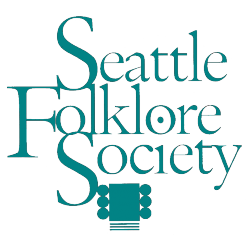By Jennifer White
I had no way of knowing when I began my Folklore Society internship that my informal conversations with Phil and Vivian Williams would be just as educational as the part of the job I was getting credit for. Among other things, we discussed the difficulty of publicizing traditional music events, the limited extent to which most Americans have access to this kind of music or know that it even exists, the American musical traditions that have begun to die out, and various types of traditional music (Vivian, not surprisingly, is a fount of knowledge concerning fiddle music). Towards the end of the internship, I was able to interview them on some of these topics, and one of the themes that emerged was the importance of the arts in education.
“Arts are an important part of society, an important part of everybody’s personal experience,” Phil told me during our interview. “We’ve been collecting articles written by educational psychologists, decrying the lack of music and arts programs in schools, because they’ve proven that the abilities in many fields go up dramatically when you’re also engaged in music-especially in math and language skills…. They’ve found if you really shut down part of your brain-for instance, the right half, which is the music part, the art part-it has an effect on the left half, which is language and math skills. So you really need to develop all of it, to have the ability to synthesize, to be able to look at the big picture, to put things together, to make one and one really equal two instead of duh. By cutting all this out of the educational program, they’ve really shut down a lot of people’s ability to synthesize, to put things together. As the educational system has gone more toward the TV and the sound bite, employers can’t get people who know how to innovate anything-” “Or read, write or think in a linear fashion,” Vivian said. “And you think that linear thinking is a left brain function, but you can’t do it unless the other part of your brain is doing something to balance it.”
“So,” Phil continued, “the whole idea behind folklife and getting people to do things themselves is that it leads to a better society. First of all, by finding things you can do that fit into a social context, and make you identify as part of a group, something about your heritage and your background, you become more comfortable with who you are. You’re more able to adapt, and also, to learn to adapt to other people. That’s really the punchline.”
In some ways, that was the punchline for me, too. My interest in working with the Folklore Society came out of a desire to learn more about music that hadn’t been processed, parceled and marketed by corporations, traditions that came from everyday people entertaining themselves. When I asked Phil and Vivian what they thought the solution to the problem was-how do you interest people in making their own music from time to time, learning about their heritage, creating their own entertainment?-they spoke about the difficulty of getting support or even publicity for traditional arts events. Most people in my generation haven’t even had the opportunity to hear the kind of music I heard during my internship, and it seems to me that this makes the role of organizations like the Seattle Folklore Society that much more important.
